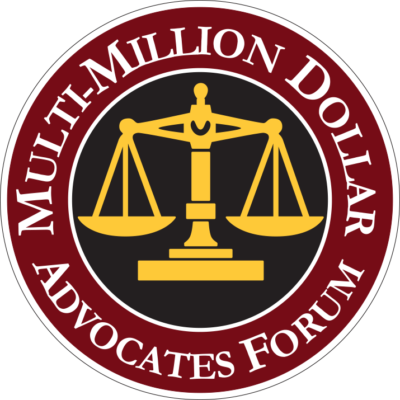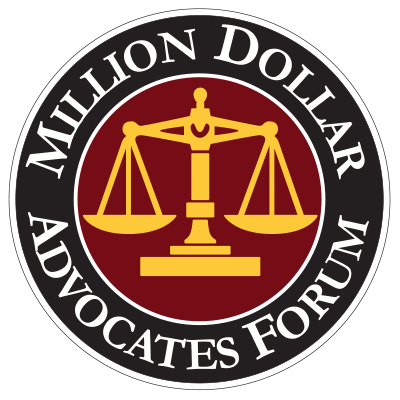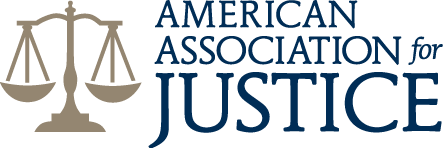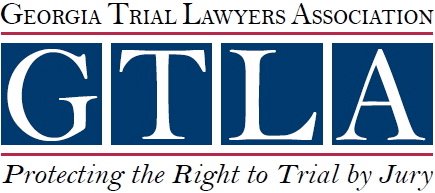Welcome to Princenthal, May & Wilson’s legal blog. As seasoned personal injury attorneys, we navigate the intricate web of liability daily. In our line of work, understanding the nuances of personal injury liability is not just a skill, but a necessity.
In today’s post, we delve into the concept of personal injury liability — what it means, how it’s determined, and why it’s crucial for both plaintiffs and defendants to understand. Whether you’re a victim seeking justice or a defendant facing a claim, grasping the fundamentals of liability can make all the difference in the outcome of your case.




What is Personal Injury Liability?
Personal injury liability is the legal obligation that individuals, businesses, or other entities may have if they cause harm to another person. In Georgia, this responsibility is largely based on the concept of negligence. This means proving that the defendant failed to uphold a duty of care towards the plaintiff, leading to injuries and losses.
Understanding personal injury liability is critical for anyone involved in these cases, whether they are making a claim or defending against one. Here’s why:
The burden of proof lies with the plaintiff in personal injury cases. The plaintiff must show, with a greater weight of evidence, that the defendant’s negligence was the direct cause of their injuries. On the other hand, defendants need to provide evidence to challenge the plaintiff’s claims and prove that they were not liable.
The evaluation of damages is directly tied to liability. The damages a plaintiff can recover often include medical expenses, lost wages, pain and suffering, among other losses. The degree of the defendant’s liability will determine how much compensation the plaintiff can receive.
Liability is a key factor in negotiations between the involved parties and their insurance companies. Insurance policies might cover damages from negligence, but insurance companies often dispute the extent of liability or try to reduce the amounts paid out.
Understanding liability helps plaintiffs navigate settlement discussions and ensures they receive fair compensation for their injuries.
Legal Strategy and Defense: For defendants, understanding their potential personal injury liability enables them to devise effective legal strategies for defense. This may involve challenging the plaintiff’s evidence, asserting affirmative defenses, or negotiating favorable settlement terms. By comprehensively assessing liability, defendants can mitigate their exposure to liability and protect their interests in litigation.
Representative Cases
Forms of Personal Injury Liability
Personal injury liability is not a one-size-fits-all concept. Instead, it encompasses a spectrum of scenarios and legal principles, each with its own unique characteristics and implications. In this detailed exploration, we delve into the various types of personal injury liability under Georgia civil law, shedding light on the distinctions and nuances that shape legal accountability in the aftermath of accidents and injuries.
Negligence Liability
Negligence is perhaps the most common type of personal injury liability in Georgia and forms the basis for many personal injury claims. Under Georgia law, negligence occurs when a person fails to exercise reasonable care, resulting in harm to another individual. This liability encompasses a wide range of situations, from car accidents caused by distracted driving to slip and fall incidents due to property owner negligence.
Strict Liability
Strict liability imposes legal responsibility on defendants for certain activities or conditions, regardless of fault or intent. In Georgia, strict liability often applies in cases involving inherently dangerous activities or defective products. For example, manufacturers may be held strictly liable for injuries caused by defective products, even if they exercised reasonable care in their design and production. Unlike negligence, plaintiffs need not prove that the defendant acted negligently — instead, they must demonstrate that the defendant’s actions or products caused their injuries.
Vicarious Liability
Vicarious liability holds one party accountable for the actions of another. This principle commonly arises in employer-employee relationships, where employers may be held liable for the negligent actions of their employees committed within the scope of their employment. In Georgia, employers may be vicariously liable for employee negligence, provided that the employee was acting within the course and scope of their employment duties at the time of the incident.
Premises Liability
Premises liability pertains to the legal duty property owners owe to individuals who enter their premises. In Georgia, property owners have a duty to maintain safe conditions on their premises and to warn visitors of any known hazards that could cause harm. This liability applies to various types of properties, including residential homes, commercial establishments, and public spaces. Common examples of premises liability claims include slip and fall accidents, dog bites, and negligent security incidents.
Product Liability
Product liability holds manufacturers, distributors, and sellers accountable for injuries caused by defective or dangerous products. Under Georgia law, plaintiffs may pursue product liability claims based on defects in design, manufacturing, or warning labels. Product liability cases often involve complex legal and technical issues, requiring thorough investigation and expert testimony to establish liability and recover damages for injuries.
Understanding the different types of personal injury liability is essential for both plaintiffs seeking justice and defendants defending against claims. Whether it’s negligence, strict liability, vicarious liability, premises liability, or product liability, each type of liability carries its own set of legal principles and requirements. By grasping these nuances and working with experienced legal counsel, individuals can effectively navigate the complexities of personal injury litigation and pursue fair compensation for their injuries and losses.
What is Negligence Per Se?
Negligence per se is a legal doctrine that establishes a defendant’s negligence based on their violation of a statute, regulation, or ordinance enacted to protect against the type of harm suffered by the plaintiff. In essence, if a defendant’s actions or failure to act violates a specific law intended to prevent the type of injury sustained by the plaintiff, they may be deemed negligent per se, thereby simplifying the plaintiff’s burden of proof.
Application of Negligence Per Se
In a personal injury case, applying the principle of negligence per se requires the satisfaction of specific criteria. Firstly, the defendant must have breached a statute, regulation, or ordinance that has been put into place by either state or local authorities. Importantly, this legal framework should aim to prevent the kind of injury that the plaintiff has endured. Additionally, the plaintiff’s injury should be a direct result of the defendant’s failure to adhere to this legal requirement. Lastly, the defendant’s breach of the law should not be justifiable or excusable under the given circumstances.
Significance of Negligence Per Se in Personal Injury Cases
Negligence per se holds considerable importance in personal injury cases, affecting both plaintiffs and defendants significantly. It streamlines the proof process for plaintiffs; they don’t need to show that the defendant breached a duty of care or that harm was foreseeable. Instead, the violation of a specific statute by the defendant stands as clear evidence of negligence. This legal concept not only simplifies the plaintiff’s case but also presumes the defendant’s liability, pushing them to prove that their actions were justifiable or did not cause the injury.
For defendants, this means crafting defenses around the irrelevance of the cited statute to their case or arguing that the breach was justified under emergency conditions or due to conflicting legal requirements. If negligence per se is successfully proven, plaintiffs might secure more substantial damages, potentially including punitive damages aimed at deterring similar future offenses.
Overall, negligence per se serves as a potent mechanism for affirming liability and pursuing compensation for suffered injuries and losses in personal injury litigation.
Essential Elements of a Personal Injury Lawsuit
Even if you believe there is personal injury liability at play, successfully navigating a personal injury lawsuit requires key elements that must be established to prove said liability and recover compensation. Here are the essential components of a personal injury claim:
Duty of Care
The first element involves demonstrating that the defendant owed a duty of care to the plaintiff. This duty varies depending on the circumstances of the case but generally requires individuals to act reasonably to avoid causing harm to others. For example, drivers have a duty to operate their vehicles safely, and property owners have a duty to maintain safe premises for visitors.
Breach of Duty
Once the duty of care is established, plaintiffs must show that the defendant breached this duty through negligent or wrongful conduct. This may involve actions such as reckless driving, medical malpractice, or failure to maintain safe conditions on a property.
Causation
Plaintiffs must establish a direct causal link between the defendant’s breach of duty and the injuries suffered by the plaintiff. In other words, they must demonstrate that the defendant’s actions or negligence were the proximate cause of the plaintiff’s harm.
Damages
Finally, plaintiffs must prove that they suffered actual damages as a result of the defendant’s conduct. These damages may include medical expenses, lost wages, pain and suffering, emotional distress, and other losses incurred due to the injury.
Types of Damages in a Personal Injury Lawsuit
In addition to understanding the essential elements of a personal injury lawsuit, it’s crucial to grasp the types of damages that may be awarded to compensate injured plaintiffs. Here are the main categories of damages that may be sought in a personal injury claim:
Compensatory Damages
Compensatory damages are designed to reimburse plaintiffs for the actual losses they have endured due to an injury. This financial compensation covers a variety of costs and losses, including medical expenses such as hospitalization, surgery, medication, and rehabilitation necessary for recovery. It also includes lost wages for income not earned during the recovery period and potential future earnings that will be missed. Additionally, compensatory damages may cover property damage, such as repairs to a vehicle involved in an accident. Beyond these tangible losses, compensation is also provided for pain and suffering, which encompasses physical pain, emotional distress, and psychological trauma resulting from the injury. In cases involving particularly egregious or intentional wrongdoing by the defendant, punitive damages may also be awarded. These are intended not to compensate the plaintiff but to punish the defendant and deter similar future misconduct.
Hiring a Personal Injury Attorney How Long Will a Personal Injury Case Take?Related Videos
Fighting for the Justice You Deserve
Understanding personal injury liability is paramount for anyone navigating the legal landscape following an injury-causing incident. Whether it’s negligence, strict liability, vicarious liability, premises liability, or product liability, comprehending the nuances of liability can significantly impact the outcome of a personal injury claim.
At Princenthal, May & Wilson, we are committed to advocating for the rights of injured individuals throughout Georgia. With our experience in personal injury law and our dedication to pursuing justice, we stand ready to assist those who have been harmed due to the negligence or wrongful conduct of others.
If you’ve been injured and believe you have a personal injury claim, we encourage you to take action today. Contact our firm for a consultation, where we can assess the merits of your case, provide personalized legal guidance, and work tirelessly to secure the compensation you deserve.
Don’t wait to assert your rights and seek the justice you’re entitled to. Reach out to Princenthal, May & Wilson today, and let us fight for you. Your journey to recovery starts here.





